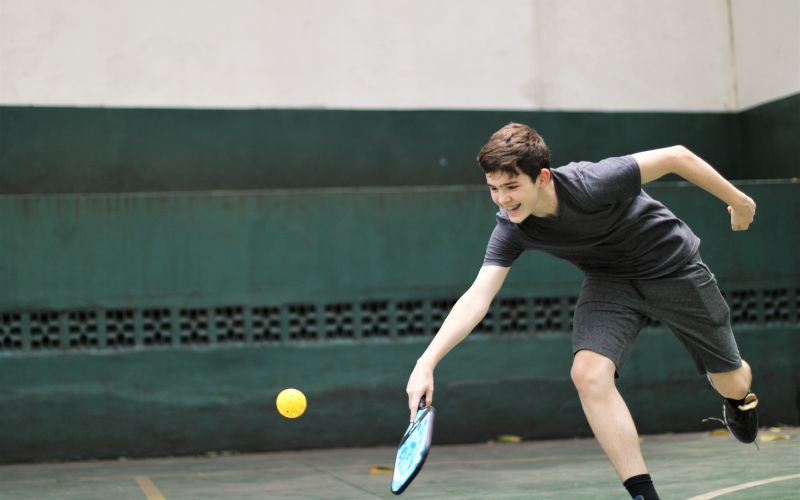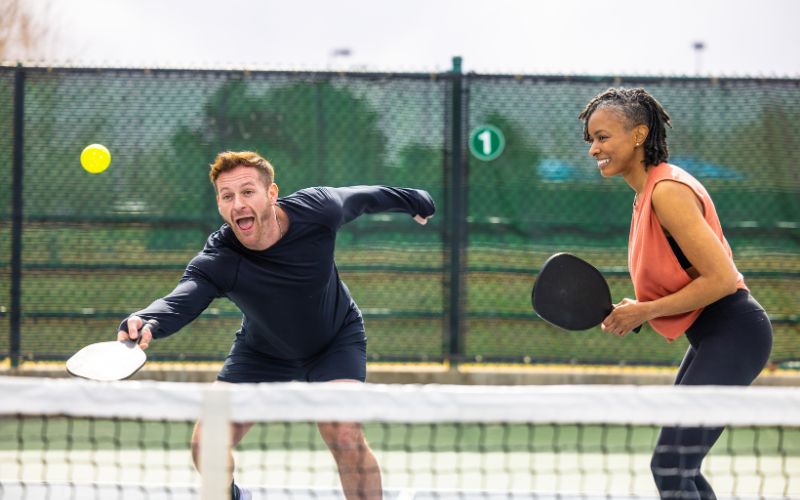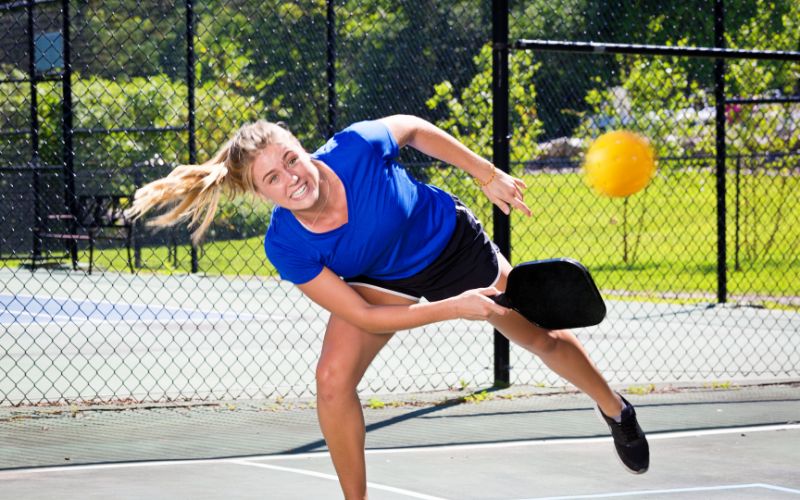Pickleball, a dynamic and fast-paced paddle sport, has gained widespread popularity across the globe. One of the fundamental rules governing pickleball gameplay is the double bounce rule, which plays a crucial role in maintaining fairness and ensuring engaging rallies on the court. In this comprehensive guide, we delve into the intricacies of the double bounce rule in pickleball, its significance, and how it influences gameplay dynamics.
What is the Double Bounce Rule in Pickleball?
The double bounce rule in pickleball stipulates that each team must allow the pickleball to bounce once on each side of the court, including the serve and the return of serve, before attempting to hit the ball out of the air. This rule emphasizes the importance of patience, strategy, and skill in executing shots during rallies.
The Origin Of The Double Bounce Rule
The origin of the double bounce rule in pickleball traces back to the game’s inception in 1965, pioneered by Joe Pritchard and Bill Bell. These two fathers devised the paddle sport as a means of amusement for their children during the extended summer days, setting up a makeshift court in their backyard, akin to a badminton-sized area.
While the genesis of pickleball and its foundational regulations can be attributed to Pritchard and Bell, the precise emergence of the double bounce rule remains ambiguous. Although it could have been an integral component of the initial game regulations, the exact origins of this rule remain shrouded in uncertainty.
The Essence of the Pickleball Double Bounce Rule
The essence of the double bounce rule lies in its role in leveling the playing field and promoting extended rallies. By requiring the ball to bounce once on each side of the court, the rule prevents the serving team from gaining an unfair serve and volley advantage. It also ensures that both teams have an opportunity to engage in rallies and showcase their skills without the pressure of immediate volley exchanges.
In contrast to tennis and several other racket sports where the serving team is allowed to immediately approach the net after serving, the double bounce rule in pickleball serves to:
- Level the playing field to some extent.
- Restrain both the serving and returning teams from displaying excessive aggression during the initial two shots of a point.
Key Components of the Double Bounce Rule
Two Bounce Rule Exist
The two bounce rule mandates that the ball must bounce twice, once on each side of the court, before players can initiate a volley exchange. This rule applies to the initial groundstrokes as well as subsequent shots during a rally.
Non-Volley Zone (Kitchen Line) Consideration
The double bounce rule is particularly significant in the non-volley zone, also known as the kitchen line. Players are not allowed to volley the ball while standing within this zone, except under specific circumstances outlined in the rule book. The double bounce rule ensures that players have adequate time and space to maneuver around the non-volley zone line and execute shots effectively.
Extension of Rallies
By requiring the ball to bounce twice before players can engage in volleys, the double bounce rule extends rallies and fosters strategic play. It encourages players to rely on groundstrokes and positioning rather than solely on volleys, leading to more dynamic and engaging exchanges.
Implementation of the Double Bounce Rule
Serving Team’s Obligation
The serving team must let the ball bounce once on their side of the court after the serve and again on the opposing team before attempting to volley or hit the ball out of the air. This ensures that the receiving team has an opportunity to return the serve and participate in the rally.
Importance of Observing the Rule
Adherence to the double bounce rule is essential for maintaining the integrity of the game and ensuring fair play. Violations of the rule, such as attempting to volley before the second bounce or hitting the ball out of the air prematurely, result in a fault and the loss of the serve.
Practical Application and Tips for New Players
Understanding the Sequence
New players should familiarize themselves with the sequence of shots and the timing required to observe the double bounce rule effectively. This involves allowing the ball’s first bounce once on their side of the court after the serve and again on the opposing side before attempting to hit the ball.
Patience and Strategy
Patience and strategic positioning are key to capitalizing on the opportunities created by the double bounce rule. Players should use the additional bounce to anticipate their opponent’s shots, adjust their positioning, and set up for effective returns.
Learning from Experienced Players
New players can benefit from observing and learning from experienced players who demonstrate effective implementation of the double bounce rule. Paying attention to shot selection, court positioning, and timing can help new players improve their understanding and execution of the rule.
Conclusion
In conclusion, the double bounce rule in pickleball is a fundamental aspect of the game that enhances fairness, strategy, and skill development. By requiring the ball to bounce twice before players can engage in volleys, the rule promotes extended rallies, strategic play, and dynamic exchanges on the court. Understanding and adhering to the double bounce rule are essential for players of all skill levels to enjoy a rewarding and competitive pickleball experience.
FAQs:
What is the Double Bounce Rule in Pickleball?
The double bounce rule requires the ball to bounce once on each side of the court, including serve and return, before attempting to hit it out of the air.
What’s the Origin of the Double Bounce Rule?
The rule’s origin can be traced back to the inception of pickleball in 1965, although its exact emergence remains uncertain.
What’s the Essence of the Double Bounce Rule?
It levels the playing field, promotes extended rallies, and prevents immediate serve and volley dominance, fostering dynamic gameplay.
What Are Key Components of the Rule?
It includes the two-bounce mandate and considerations for the non-volley zone, encouraging strategic play and fair exchanges.
How is the Rule Implemented?
The serving team must allow the ball to bounce once on each side before attempting to volley, ensuring fair play and integrity in the game.




